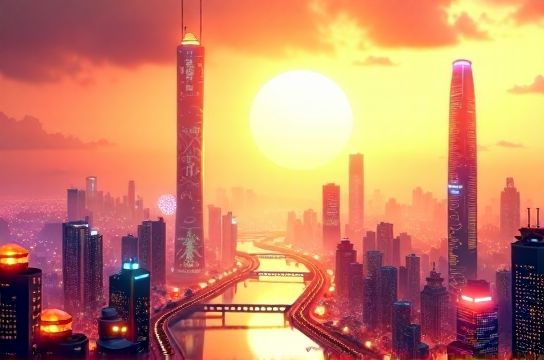Amazingly Creative Chinese Problem Solvers
- 时间:
- 浏览:14
- 来源:OrientDeck
In the fast-paced world of innovation and tech, one thing’s for sure: Chinese problem solvers are rewriting the rules. From grassroots ingenuity to high-tech breakthroughs, their creativity isn’t just impressive—it’s reshaping industries. Think about it: when challenges hit, China doesn’t just adapt—it innovates with flair.

Take the concept of jiǎochǒu bànfǎ (‘clever workaround’). It’s more than a cultural quirk—it’s a mindset. Whether it’s repurposing old smartphones into smart home hubs or turning shipping containers into pop-up cafes, Chinese thinkers thrive on making more with less. This ‘can-do’ attitude fuels everything from rural e-commerce booms to AI-powered city planning.
Let’s talk numbers. According to the World Intellectual Property Organization (WIPO), China filed over 1.6 million patent applications in 2023—topping the global charts for the 13th straight year. That’s not luck; that’s a nation wired for creative solutions.
| Year | Patent Applications (China) | Global Rank | Key Innovation Areas |
|---|---|---|---|
| 2021 | 1,587,000 | 1st | AI, 5G, Green Tech |
| 2022 | 1,623,000 | 1st | E-mobility, Robotics |
| 2023 | 1,698,000 | 1st | Quantum Computing, Biotech |
But it’s not all labs and laptops. In villages across Yunnan and Guizhou, farmers use WeChat mini-programs to sell organic tea directly to urban foodies. One village boosted income by 300% in two years—proof that simplicity, when paired with smarts, hits hard.
Then there’s Shenzhen—a city once dubbed ‘the world’s factory,’ now reborn as a startup mecca. Walk its streets and you’ll see drone makers, open-source hardware tinkerers, and coders hacking tomorrow’s tools in shared maker spaces. The secret? A blend of speed, access to supply chains, and fearless iteration.
And let’s not sleep on education. While Western schools debate screen time, Chinese students dive into coding at age 8. By 15, many are building apps or entering national STEM Olympiads. This early immersion builds a reflex for solving real-world puzzles—not just textbook ones.
So what can the world learn? First, constraints spark creativity. Second, blending tradition with tech works wonders. And third, innovation isn’t just for elites—it’s a team sport.
Whether it’s turning bike-sharing chaos into data-driven urban design or using AI to revive ancient calligraphy, Chinese problem solvers show us that the best solutions are often the most human: clever, resilient, and full of surprise.